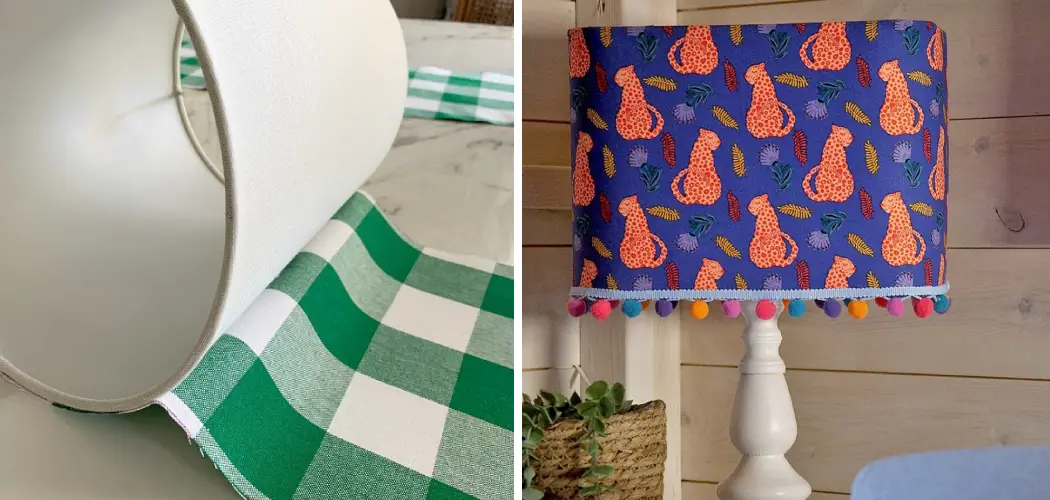When it comes to home decor, lampshades play an important role in providing both functional and aesthetic value to a room. However, over time, the fabric on your lampshade can become worn out or outdated, making it necessary to replace or cover it with new fabric. In this guide, we will discuss the process of covering a lampshade with fabric, highlighting its benefits and giving you tips to ensure success.
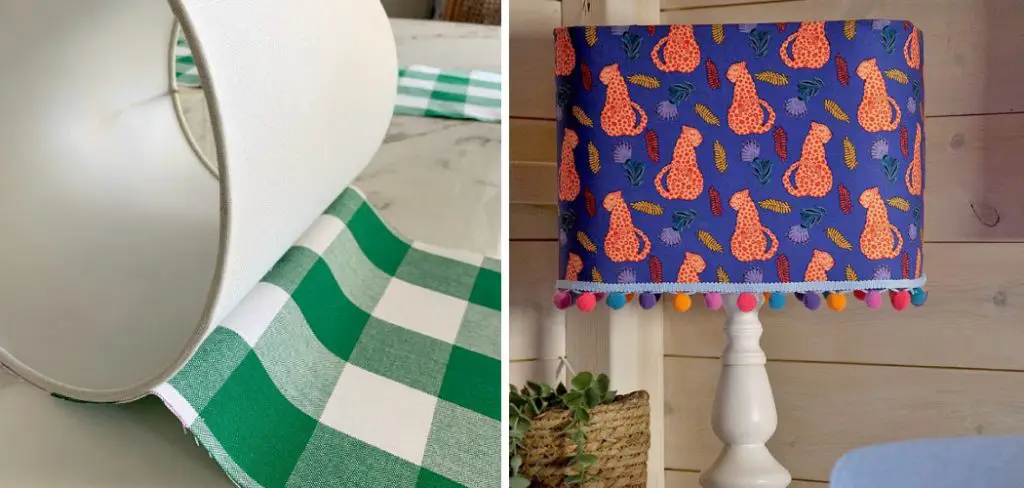
Covering a lampshade with fabric is a great way to update the look of your room without having to buy a new lamp or spend a lot of money. It allows you to customize your lampshade to match your personal style and decor, making it truly unique.
Additionally, covering a lampshade with fabric is an eco-friendly alternative as it reduces waste by reusing existing lampshades. In this blog post, You will learn in detail how to cover a lampshade with fabric.
Materials You Will Need
- A lampshade
- Fabric of your choice
- Scissors
- Measuring tape
- Pen or fabric marker
- Glue for fabric (Speed-Sew glue is recommended)
- Paintbrush or foam brush
- Sewing pins
- Iron and ironing board
- Trim or ribbon (optional)
Step-by-step Instructions for How to Cover a Lampshade With Fabric
Step 1: Inspect the Lampshade
Before starting the process of covering a lampshade with fabric, it is important to inspect the lampshade carefully. Check for any damages or stains on the existing fabric and make sure it is clean before proceeding.
Step 2: Choose Your Fabric
Choose a fabric that suits your personal style and complements the decor of your room. Consider the size and shape of your lampshade when selecting the fabric to ensure you have enough to cover it completely. Lay your chosen fabric flat on a clean surface and iron out any wrinkles. If you are using a patterned fabric, make sure it is aligned correctly before cutting.
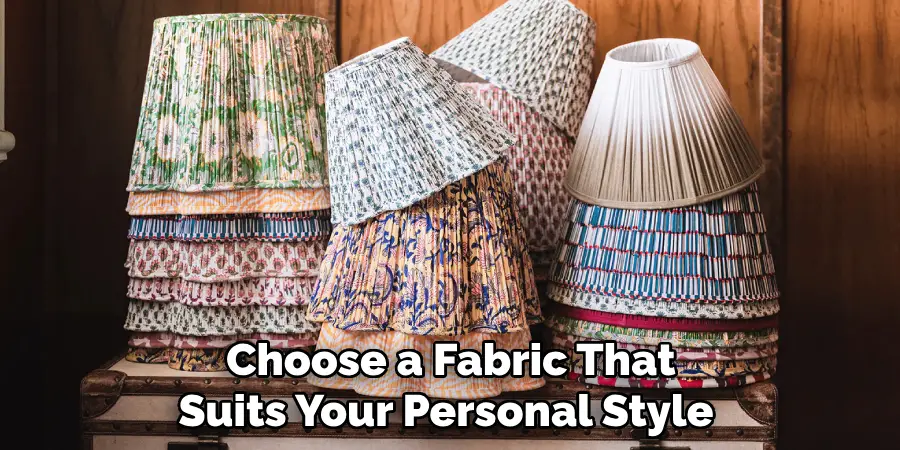
Step 3: Measure and Cut the Fabric
Measure your lampshade by wrapping the fabric around it, leaving excess fabric at the top and bottom. Cut the fabric to size, adding an extra inch on each end for seam allowance. Using a small paintbrush, apply fabric glue evenly on the inside of your lampshade. Make sure to cover all areas where the fabric will be adhered.
Step 4: Place the Fabric on the Lampshade
Carefully place the fabric onto the lampshade, making sure to smooth out any wrinkles or bubbles. Start at one end and work your way around, pressing down firmly. Once the fabric is fully adhered to the lampshade, trim off any excess fabric from the top and bottom using sharp scissors.
Step 5: Fold and Glue Edges
Fold the excess fabric at the top and bottom edges of the lampshade and secure it with fabric glue. This will create a clean edge and prevent fraying. Let the lampshade dry for at least an hour before moving on to the next step. This will ensure that the fabric is securely attached and won’t shift while working on it.
Step 6: Create a Hem
To create a neat hem, fold over the top and bottom edges of the fabric and secure with fabric glue. Use binder clips or clothespins to hold the fabric in place while it dries. For an extra touch, you can add trim to the top and bottom edges of your lampshade. This could be ribbon, lace, or any other decorative material that complements your fabric choice.

Once all the steps are completed, let the lampshade dry overnight before using it. This will ensure that the fabric and trim are fully adhered and your new lampshade is ready to be displayed.
Safety Precautions for How to Cover a Lampshade With Fabric
- Before starting the process of covering a lampshade with fabric, make sure to wear appropriate safety gear such as gloves and goggles. This will protect your hands from any sharp edges or splinters and prevent any eye injuries from occurring.
- The glue used in this project can emit strong fumes, so make sure to work in a well-ventilated area to avoid any potential health hazards.
- If you are using hot glue, be cautious of the hot temperature and avoid getting any on your skin as it can cause burns.
- Use sharp scissors when cutting the fabric to ensure clean and precise cuts. Dull scissors can slip and cause injuries.
- When using a hot glue gun, keep it away from any flammable or combustible materials to avoid any fire hazards.
- If you are using electrical tools such as a hot glue gun or a stapler, make sure to unplug them when not in use to prevent any accidents.
- When handling the lampshade frame, be careful of the edges and corners which may be sharp. Consider wearing gloves or using pliers to avoid any cuts or injuries.
These safety precautions are important to keep in mind as you embark on your project of covering a lampshade with fabric. Taking the necessary safety measures will not only protect you from potential harm, but also ensure a smooth and successful process.
How Long Does It Take to Cover a Lampshade With Fabric?
When it comes to DIY home decor projects, one popular technique is covering a lampshade with fabric. Not only does this add a personal touch to your space, but it also allows you to match the lampshade to your existing decor.
But before you start measuring and cutting, you may be wondering how long it will take to cover a lampshade with fabric. The truth is, the time it takes to cover a lampshade with fabric varies depending on several factors.
These include the size of the lampshade, the complexity of its shape, and your sewing skills. Generally speaking, covering a basic drum-shaped lampshade can take anywhere from 30 minutes to an hour.
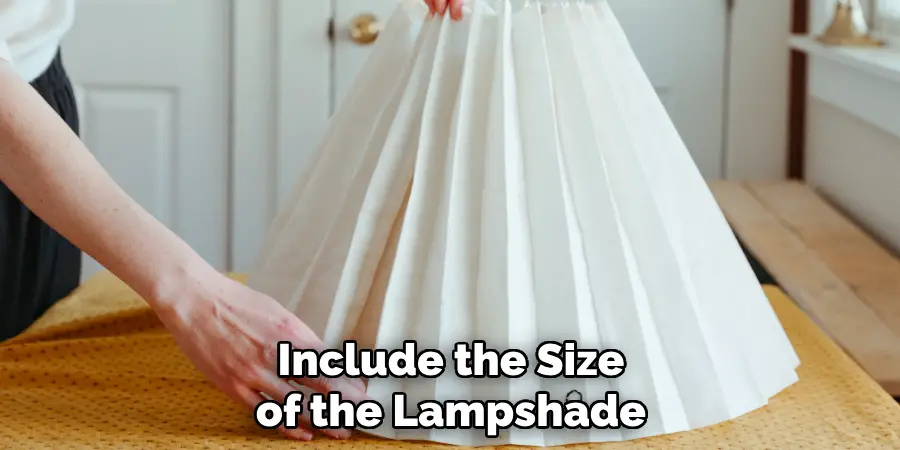
However, if you have a more intricate lampshade with curves or ridges, it may take longer to cover. You may also need to consider the thickness and texture of the fabric you are using, as well as any additional details or embellishments you want to add.
What Are the Benefits of Covering a Lampshade With Fabric?
Covering a lampshade with fabric can be a fun and creative way to give new life to an old or plain lampshade. Not only does it add a decorative touch, but it also has practical benefits. In this section, we’ll explore the various advantages of covering a lampshade with fabric.
1. Customization
One of the biggest benefits of covering a lampshade with fabric is the ability to customize it according to your personal taste and style. With a wide range of fabrics available, you can choose from different colors, patterns, and textures to match your home decor. This allows you to create a unique and personalized look for your lampshade that reflects your personality.
2. Cost-Effective
Another advantage of covering a lampshade with fabric is that it is a cost-effective way to update your home decor. Instead of buying a new lampshade, which can be expensive, you can simply use fabric to cover an old one and give it a fresh look. This not only saves money but also reduces waste by repurposing existing items.
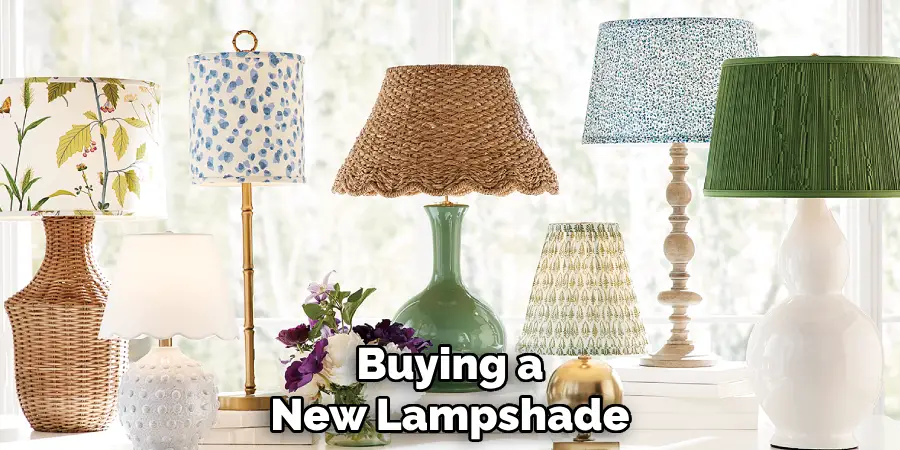
3. Versatility
Covering a lampshade with fabric also adds versatility to your home decor. As trends and styles change, you can easily switch out the fabric on your lampshade to keep up with the times without having to buy a whole new lampshade. This allows for more flexibility in decorating and updating your living space.
4. Soft Lighting
Fabric lampshades also have the benefit of diffusing light, creating a softer and warmer ambiance in a room. This is especially beneficial in areas where you want a cozy and inviting atmosphere, such as a living room or bedroom. The fabric helps to soften the harshness of light bulbs, making the room more comfortable.
5. Protection
Lastly, covering a lampshade with fabric also offers protection to both the lampshade and the bulb inside. Fabric acts as a barrier between the bulb and the outside environment, preventing dust and debris from getting inside. It also helps to protect the lampshade itself from wear and tear, extending its lifespan.
Overall, covering a lampshade with fabric not only adds a decorative element but also provides practical benefits such as customization, cost-effectiveness, versatility, soft lighting, and protection. So next time you want to update your home decor, consider covering a lampshade with fabric for an easy and effective transformation.
What Are Some Creative Ways to Incorporate Fabric Into a Lampshade Cover?
Lampshades are an essential element in any room’s decor, providing both functional and decorative purposes. Over time, lampshade covers can become worn out, stained, or simply outdated. That begs the question: How often should you replace a lampshade cover? The answer depends on several factors, including material quality, usage frequency, and personal preference.
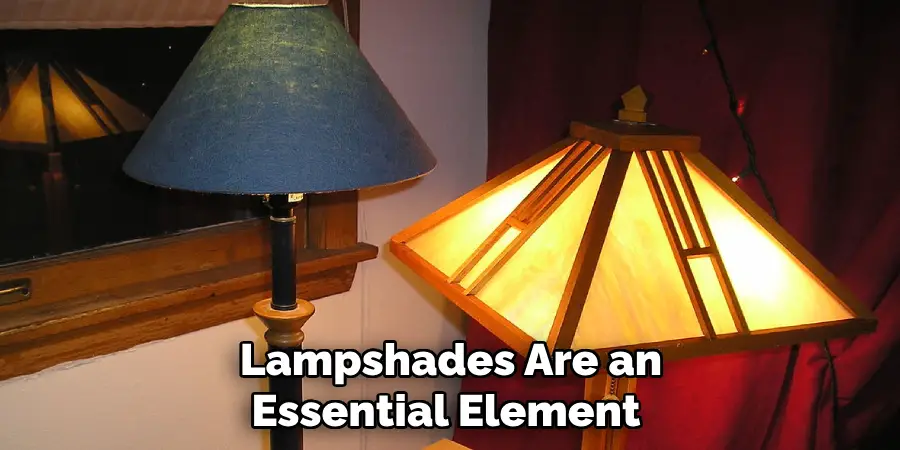
For example, if you have a lampshade cover made from quality fabric and only use it for decorative purposes, it may last for years without needing replacement. On the other hand, a lampshade used daily or in high-traffic areas may need to be replaced more often.
But why settle for a plain, boring lampshade cover when there are so many creative ways to incorporate fabric into your lampshade? With a little bit of imagination and some basic crafting skills, you can transform an ordinary lampshade into a unique piece that reflects your personal style.
Conclusion
In conclusion, we have explored the process of covering a lampshade with fabric and seen that it is a simple yet effective way to update the look of any room. By following these steps, you can easily create a unique and customized lampshade that reflects your personal style.
We started by gathering all the necessary materials such as fabric, scissors, glue, and a lampshade frame. Then, we measured and cut the fabric to the appropriate size, leaving enough room for overlap.
After applying glue to the lampshade frame, we carefully placed the fabric on top and smooth it out to remove any wrinkles or air bubbles. I hope reading this post has helped you learn how to cover a lampshade with fabric. Make sure the safety precautions are carried out in the order listed.

